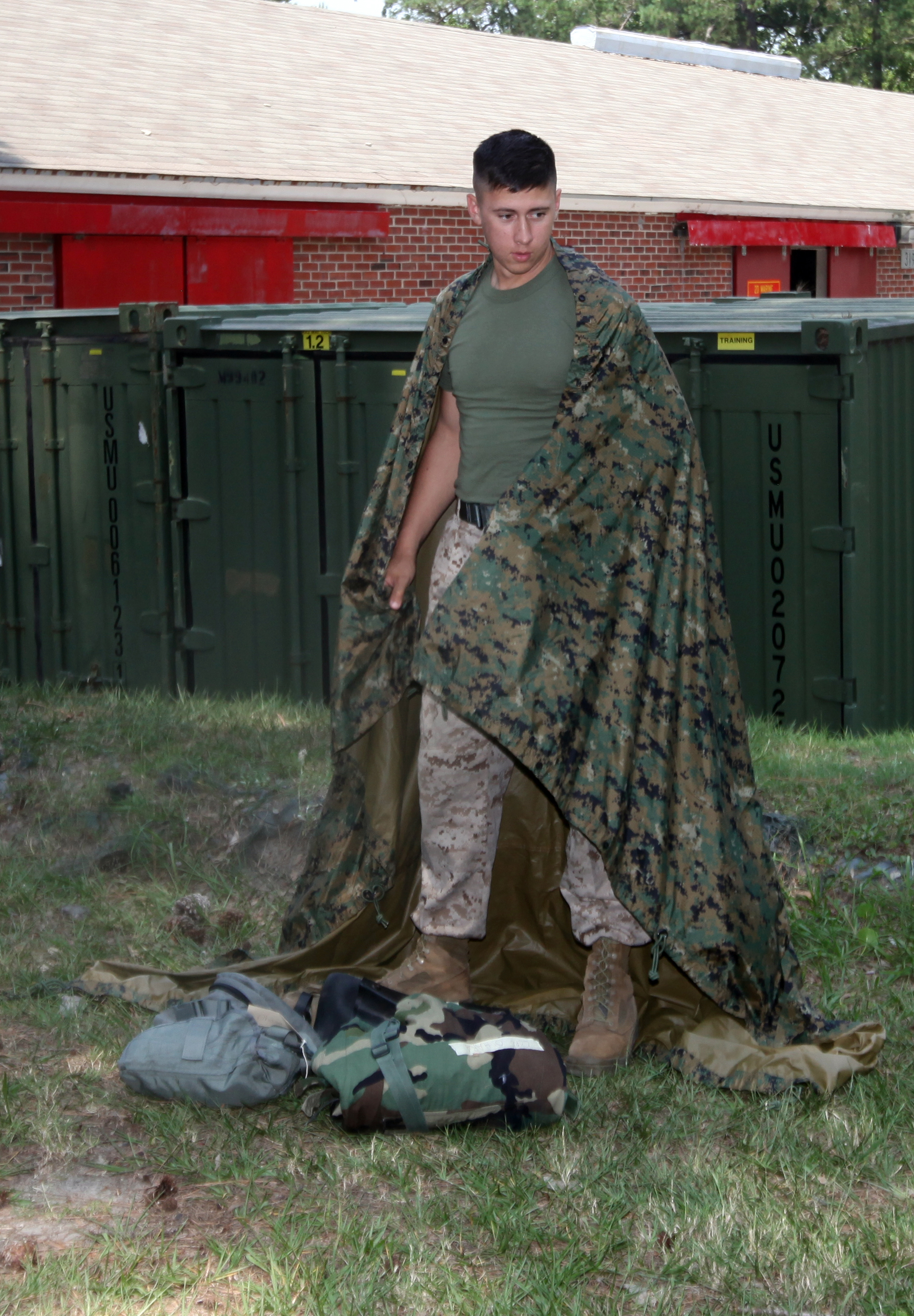Poncho Liner on:
[Wikipedia]
[Google]
[Amazon]

 A woobie, is a piece of field gear originating in the
A woobie, is a piece of field gear originating in the

 A woobie, is a piece of field gear originating in the
A woobie, is a piece of field gear originating in the United States military
The United States Armed Forces are the military forces of the United States. The armed forces consists of six service branches: the Army, Marine Corps, Navy, Air Force, Space Force, and Coast Guard. The president of the United States is the ...
that can be attached to a standard issue poncho
A poncho (; qu, punchu; arn, pontro; "blanket", "woolen fabric") is an outer garment designed to keep the body warm. A rain poncho is made from a watertight material designed to keep the body dry from the rain. Ponchos have been used by the ...
to provide additional warmth, as well as being usable as a blanket, sleeping bag
A sleeping bag is an insulated covering for a person, essentially a lightweight quilt that can be closed with a zipper or similar means to form a tube, which functions as lightweight, portable bedding in situations where a person is sleeping o ...
or protective cover. It consists of quilted nylon
Nylon is a generic designation for a family of synthetic polymers composed of polyamides ( repeating units linked by amide links).The polyamides may be aliphatic or semi-aromatic.
Nylon is a silk-like thermoplastic, generally made from petro ...
with a polyester
Polyester is a category of polymers that contain the ester functional group in every repeat unit of their main chain. As a specific material, it most commonly refers to a type called polyethylene terephthalate (PET). Polyesters include natural ...
filling. It is attached to the poncho by means of integral lengths of material which are looped through the poncho's eyelets.
Poncho liners were first used by the U.S. military in the Vietnam War
The Vietnam War (also known by #Names, other names) was a conflict in Vietnam, Laos, and Cambodia from 1 November 1955 to the fall of Saigon on 30 April 1975. It was the second of the Indochina Wars and was officially fought between North Vie ...
. They gained the nickname "woobie" later; that term is conjectured to have derived from the name for a child's security blanket in the 1983 movie ''Mr. Mom
''Mr. Mom'' is a 1983 American comedy film directed by Stan Dragoti and produced by Lynn Loring, Lauren Shuler, and Aaron Spelling. It stars Michael Keaton (in his first lead role), Teri Garr, Martin Mull, Ann Jillian, and Christopher Lloyd. It ...
''.Construction and history
Although it is unclear how this item originated, it was first fielded around 1962 to special forces troops in Vietnam. The poncho liner consists of two layers of quilted nylon encasing a polyester batting. There were tie-cords on the corners and side that could be tied through matching grommets on rain ponchos. They measured . The intent was to field an item which was lighter and faster drying than the standard-issue Army Wool Blanket, which had essentially been rendered obsolete in the wet and tropical environment of Vietnam. The first ones were Olive Drab on both sides and the earliest models featured squared corners. Around 1963, a second model was fielded which was made of WWII duck-hunter patterned parachute fabric. This model required the standard "center seam" because the fabric wasn't wide enough to produce the entire width. Later, the first camouflaged pattern was produced which was named, "ERDL Pattern." This stood for Engineer Research and Development Laboratories and the acronym became the common name for the pattern, which was enlarged somewhat in the 1980s to become the Woodland Pattern used on the BDU uniform and late 1980s poncho liners. The center seam was abandoned in the early 1970s because fabric could be produced in bolts that were wide enough that this sewing pattern was now obsolete. Until the USMC produced their own Digital Woodland Pattern, most poncho liners were produced with the same pattern on both sides. The Marines decided to field one with Woodland Pattern on one side and a solid Coyote Color on the other. There are examples of improved models, which included high-tech 3M fillers (Thinsulate and the like), border and head zippers (there is no hole for one's head on standard issue poncho liners), and a variety of colors and patterns. Brigade Quartermaster, Inc. used to sell a zipper modification kit, which essentially codified and standardized commonly made modifications. Most recently, there have been models produced and issued in the Army's Universal Combat Pattern, the USAF's Environmental Camouflage Pattern, and Multicam/Scorpion II/etc.Opinions
Opinions among the troops generally held the poncho liner in high regard as a very useful piece of equipment, light and packable yet reasonably warm. Even when soaking wet, the poncho liner wrapped around a soldier would trap body heat. Many soldiers went to great lengths to find ways to keep their poncho liners as long as possible, even when they leave the service oftenupcycling
Upcycling, also known as creative reuse, is the process of transforming by-products, waste materials, useless, or unwanted products into new materials or products perceived to be of greater quality, such as artistic value or environmental value ...
or custom tailoring them into smoking jackets, hoodies, blanket coats or robes.
References
{{Reflist Military equipment of the United States